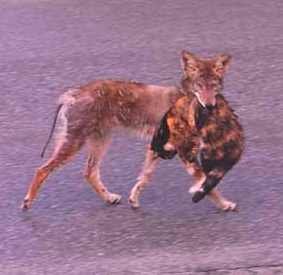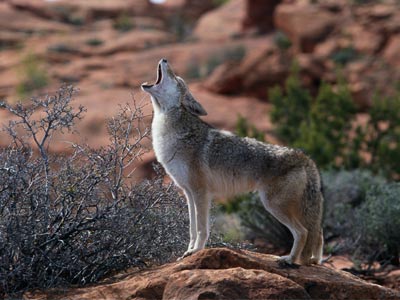HERB:
Most herbs can tolerate full sun, but healthy well-balanced growth (known as "vigor") will be increased with some afternoon sun protection in Borrego Springs.
We have a great flower bed directly outside of our "back door", which is off the kitchen and is partially shaded in the afternoon! The location makes it so convenient to pick fresh mint for The Very Happy Mr. W's mojitos, pick rosemary to garnish a roast, or cut a few stocks of fresh lavender to stick in a small vase next to our bed.
Herbs, like most plants, need a solid root system by the time the weather begins to heat up, so the best "planting" season for many herbs begins in mid-August and runs until the end of March or April. We will all have better results if we practice self discipline and stick to a planting schedule that is best for the plant! Good luck with that.
I find myself unable to resist the 4" herb starts sold at the Borrego Springs Friday farmers market through May. They are healthy little plants and very inexpensive!
HERB:
A plant that is useful in some way.
I love to grow herbs that we can use for cooking or that add a fresh, memorable smell to the garden.
I've got a decent herb garden in Seattle. And since we purchased the little Borrego Springs house in December, I've planted the beginnings of an herb garden - mint, aloe, Spanish lavender, culinary sage, mountain sage, Greek oregano and "Tuscan Blue" rosemary.
So far, so good, but the lavender does look a little scrawney and is likely getting too much sun right now.
 |
| SPANISH LAVENDER |
We have a great flower bed directly outside of our "back door", which is off the kitchen and is partially shaded in the afternoon! The location makes it so convenient to pick fresh mint for The Very Happy Mr. W's mojitos, pick rosemary to garnish a roast, or cut a few stocks of fresh lavender to stick in a small vase next to our bed.
Herbs, like most plants, need a solid root system by the time the weather begins to heat up, so the best "planting" season for many herbs begins in mid-August and runs until the end of March or April. We will all have better results if we practice self discipline and stick to a planting schedule that is best for the plant! Good luck with that.
 |
| DESERT SAGE (Salvia dorrii) |
 |
| BASIL (MY FAVORITE!) |
 |
| DILL |
Many of the herbs that thrive in our harsh desert environment are of Mediterranean origin. Soil types, low rainfall and over 300 sunny days a year allow these familiar herbs to grow easily in Borrego Springs gardens.
While many culinary herbs are perennials, some of them are seasonal annuals and must be grown in either the cool season or the warm season here in the low desert. For example, annual cilantro and dill can be planted in the fall to grow months.
Parsley, normally a biennial lasting two years, may not endure summer in Borrego Springs.
While many culinary herbs are perennials, some of them are seasonal annuals and must be grown in either the cool season or the warm season here in the low desert. For example, annual cilantro and dill can be planted in the fall to grow months.
Parsley, normally a biennial lasting two years, may not endure summer in Borrego Springs.
Some perennials such as culinary chives, French tarragon, and Mexican tarragon may disappear underground for the winter, re-sprouting with fresh growth the following spring.
Ancient Greeks used Sage as a mental stimulant. Sage is in the genus of Salvia, and is associated with salvation and good health.
Rosemary (a Mediterranean native) has been used for centuries for scenting and medicinal purposes. It is associated with remembrance and fidelity because of it’s long-lasting piney aroma. Rosemary is the symbol of friendship and loyalty.
I have been told that basil, commonly an annual in other regions, can last more than one season in the low desert if protected from frost. I need to learn how to do that!

Mint and lemon-flavored herbs (e.g. lemon verbena) are among the most popular for herbal teas. With the variety of these plants that thrive in the low desert, along with other flavored herbs, you can grow your own tea blend! As a general rule, use one teaspoon of dried herbs, or two teaspoons of fresh herbs to each cup of boiled water for tea.
A couple of my favorite herb recipes:
Gremolata
- 1/4 cup chopped fresh flat-leaf parsley
- 1 teaspoon minced rosemary leaves
- Zest of one lemon
- 2 cloves garlic, minced
- Pinch salt
- Pinch freshly ground black pepper
- 2 teaspoons good olive oil
Mix together. Serve with roasted meats or use as a garnish for lasagna or other pasta dishes for a fresh punch of flavor.
 |
| CURLEY (USUALLY FOR GARNISH) & FLAT LEAF (PREFERRED BY COOKS) PARSLEY |
Basil Pesto
- 1/4 cup walnuts*
- 1/4 cup pine nuts*
- 3 tablespoons minced garlic (9 cloves)
- 5 cups fresh basil leaves, packed
- 1 teaspoon kosher salt
- 1 teaspoon freshly ground black pepper
- 1 1/2 cups good olive oil
- 1 cup freshly grated Parmesan cheese
*using all walnuts or all pine nuts will be delicious too.
Place the walnuts, pine nuts and garlic in a food processor. With the standard blade, process for 30 seconds, then add the basil leaves, salt and pepper. Keep processor running and slowly poor in the olive oil until the pesto is thoroughly pureed. Add the Parmesan and puree for another minute.
You can use the pesto immediately or store it in the refrigerator. I like to freeze the pesto in ice cube trays, which makes a nice portion for a family pasta dinner. Spray the ice cube trays with Pam olive oil spray, fill with the pesto mixture, spray again with the Pam olive oil and freeze. After frozen, the cubes of pesto can be stored in a zip-lock freezer bag.
Tip: Don't "cook" pesto. Add it to your recipe at the last minute, allowing it to melt into the dish.
Tip: Don't "cook" pesto. Add it to your recipe at the last minute, allowing it to melt into the dish.


































.jpg)








